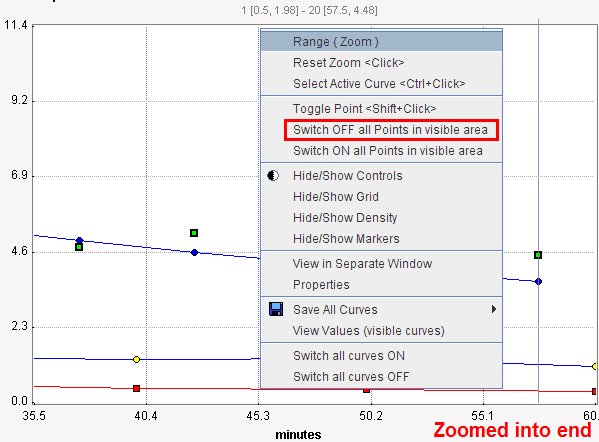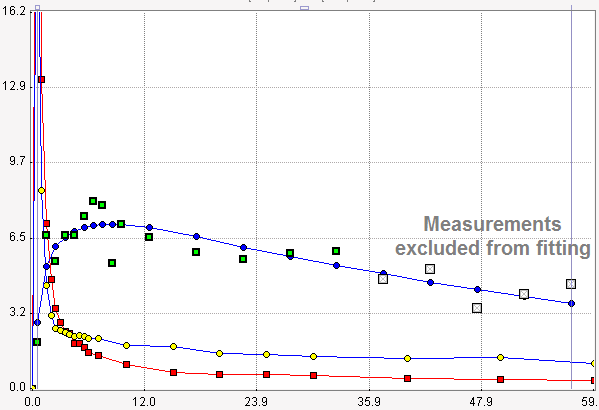Occasionally there might be the need to disregard sample points when evaluating the matching criterion, for example to exclude an outlier, or to study the stability of model estimates with successive shortening of the acquisition duration.
In PKIN this can be easily achieved by (temporarily) disabling samples. First select the Measured curve by selecting it in the controls area or by CTRL+Click at a point. The green measurement points must appear highlighted in the display. Then individual points can be disabled by SHIFT+Click on them. For entire ranges it is advised to zoom into the region (drag left mouse button), then activate the context menu (right mouse button) and Switch OFF all Points in visible area. This operation is illustrated below

resulting in a "shortened" acquisition for fitting purposes:

Disabled measurements appear in grey. They can again be enabled by a second SHIFT+Click, or by Switch ON all Points in visible area in the context menu.
Testing the Impact of Study Duration on Parameter Estimates
A frequent task is to find out the minimal study duration which allows the reliable estimation of a parameter. Such an analysis can be performed in PKIN as follows:

Repeat steps 2-5 continually shortening the acquisition until the parameter estimates degenerate. Then all data is available in a single file which can be opened in a program such as MS Excel for a statistical analysis.